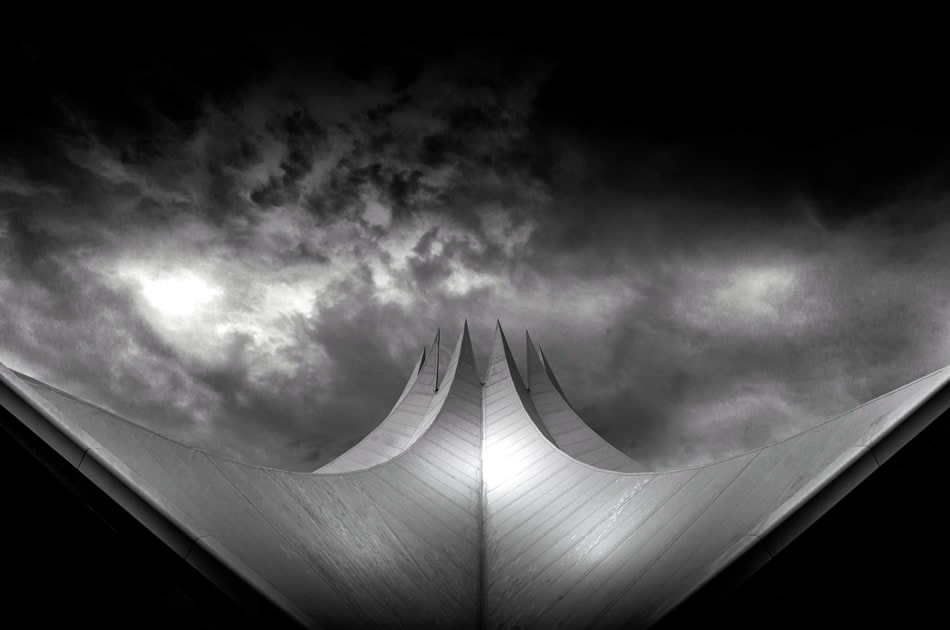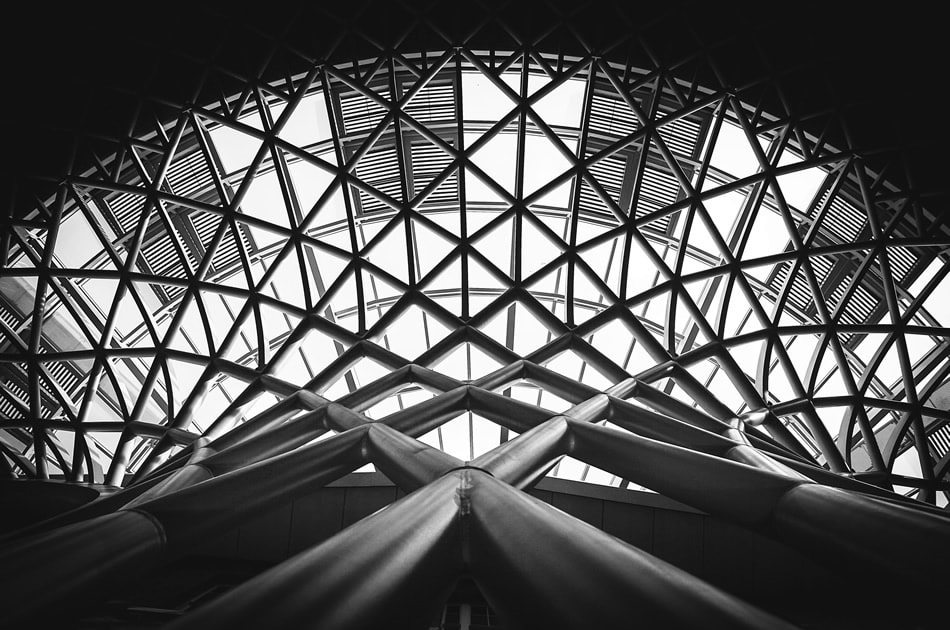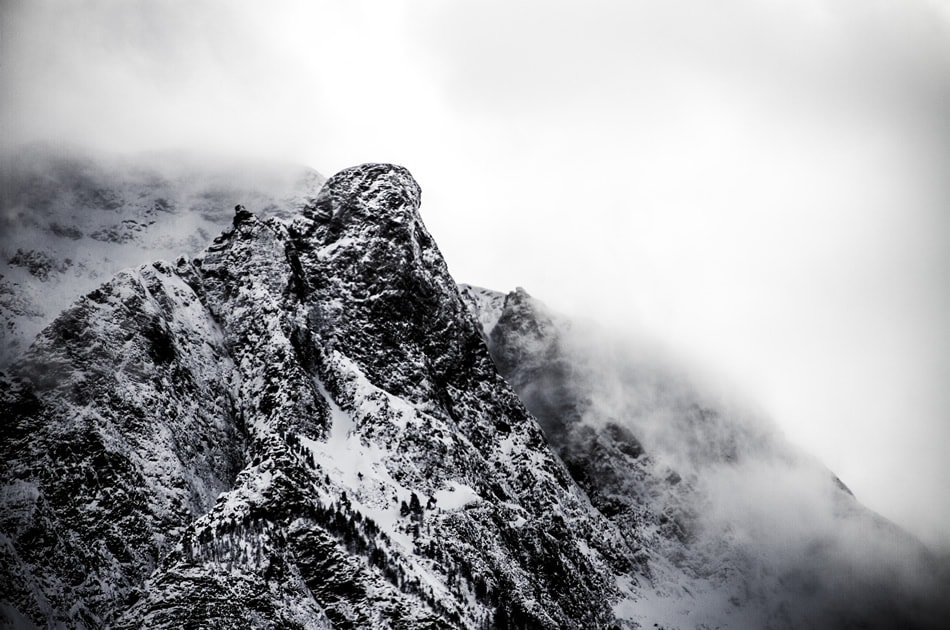How To Shoot Stunning & Stylish Monochrome Photos
Monochrome photography – better known as black-and-white photography – is one of the most stylish and classic forms of the medium you’ll ever work with. Though color has today replaced much of black and white, monochrome is more than ever regarded as romantic due to its timeless quality.
Ironically, although the advancement of technology has ushered in color as the choice of the vast majority of photographers, this same technology is what makes shooting in black and white easier than ever today! That’s welcome news for those photographers who want to dabble in monochrome for romantic reasons or just to try something different.

What follows are highly useful and actionable tips and tricks to get you started on your monochrome adventure.
Darker Darks to Obtain Brighter Lights
This is a very cool trick because it’s straightforward and produces a neat effect. If you want to get some very pronounced light areas that really pop in your monochrome frame, then just make the darker areas that much darker.
This is almost a Jedi mind trick because it plays on the psychological. This doesn’t mean it’s any less effective. On the contrary, it’s very effective. When the darks in your frame are taken down a few more notches, the audience’s minds will begin to see the lighter areas as so much lighter.
You’ll be surprised at how this can work with scenes where such a contrast isn’t very pronounced or even there at all. Since the lighter areas reflect light in real life, they’ll look brighter anyway when you pull the darker spots down in editing.

The Long Exposure
If you’re shooting clouds or moving water, then try using a long exposure. It’s spectacular how attractive this makes your shots look in black and white.
Here’s what’s happening from a technical standpoint when you go with a long exposure. Tonal contrast is improved during a long exposure because the highlights in a shot are recorded over a wider range of space than they would with a short exposure.
In the case of motion – such as flowing water – you’ll get the added bonus of textural contrast against solid objects, which is such a welcome point of interest in any frame.
From the technique standpoint, it may be required for you to use a neutral density filter to lessen your exposure and extend the shutter speed. Also, keep in mind that you should be using a tripod to ensure your camera stays still and your shot isn’t blurred. If your exposure goes to approximately beyond 1/60 of a second, then this becomes necessary. You can also experiment with utilizing a mirror lock-up and remote release. These will help you cut down on vibration. As a result, you should be able to create sharper images.

Focusing on Patterns
Many photographers who shoot color exclusively or repeatedly for longer periods of time tend to run into problems with spotting patterns very easily. That’s because using color so much of the time prevents you from being able to appreciate where all of the patterns in a shot or frame lie. Think of color as a distraction, in that sense.
The attraction with patterns lies in their organized repetition, which just draws the eye. Black and white makes it easier to appreciate patterns because there’s nothing to get in the way.
Just try this exercise: Try to visualize scenes in black and white as you scour a scene for patterns. You’ll have a more efficient time being able to spot patterns. Maybe it’s the row of trees over there, the cars in that huge parking lot elsewhere, or the well-groomed uniforms on schoolchildren as they head into the school bus.

Filters to the Rescue
Filters can make a huge difference in monochrome photography. Whether it’s a split grad or a polarizer, you can really appreciate the impact of filters in your black and white shots.
Use a polarizing filter, for example, to darken the sky in your frame, thereby creating epic drama and a dour, dour mood. Use a split graduated filter, in another case, to make a brighter area in your frame stand out from the rest of the shot. When you darken a section of your shot with a split grad, you can make even the most subtle, bright area become very noticeable, which creates a focal point in your shot.
Of course, a fair part of using filters is learning when to use them. It all comes down to being able to spot what scene can benefit from filters, but you’ll eventually develop an eye for this the more you work with black and white.

RAW and JPEG
Tying into developing an eye for shooting in monochrome, one of the biggest favors you can do yourself is working with your camera’s monochrome mode. Simply take shots in RAW and JPEG at the same time while setting the camera to its monochrome film simulation mode, you’ll be shown a reliable view of what your shot will look like when it’s in black and white.
This is a godsend, particularly for those photographers who just haven’t worked in black and white too much or at all. Your camera’s monochrome mode will enable you to perform scene analysis and composition so much more efficiently. Talk about a priceless feature that’s built right into your camera!

So Classic and so Romantic
Even in the 21st century, we still have a romantic notion of the black and white medium. Just look at old, black-and-white movies that are ageless and timeless because of how they were shot. The exact, same thing can be said about classic, monochrome photographs that have stood the test of time.
There’s just something about monochrome that still connects with audiences today. Maybe it’s the overwhelming loudness of color; maybe it’s because some people are feeling nostalgic.
Or maybe it’s because shooting in black and white just produces great results because you’re required to develop fundamental shooting skills and techniques without color to save you. At any rate, try monochrome photography today, and find out for yourself!
